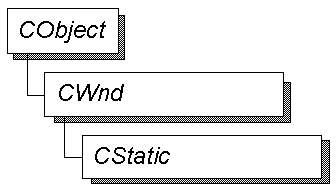 The CStatic class provides the functionality of a Windows static control. A static control is a simple text field, box, or rectangle that can be used to label, box, or separate other controls. A static control takes no input and provides no output.
The CStatic class provides the functionality of a Windows static control. A static control is a simple text field, box, or rectangle that can be used to label, box, or separate other controls. A static control takes no input and provides no output. The CStatic class provides the functionality of a Windows static control. A static control is a simple text field, box, or rectangle that can be used to label, box, or separate other controls. A static control takes no input and provides no output.
The CStatic class provides the functionality of a Windows static control. A static control is a simple text field, box, or rectangle that can be used to label, box, or separate other controls. A static control takes no input and provides no output.
You create a static control in two steps. First, call the constructor CStatic to construct the CStatic object, then call the Create member function to create the static control and attach it to the CStatic object.
If you create a CStatic object within a dialog box (through a dialog resource), the CStatic object is automatically destructed when the user closes the dialog box.
If you create a CStatic object within a window, you may also need to destroy it. A CStatic object created on the stack within a window is automatically destroyed. If you create the CStatic object on the heap by using the new function, you must call delete on the object to destroy it when the user terminates the Windows static control.
CWnd, CButton, CComboBox, CEdit, CListBox, CScrollBar, CModalDialog, CDialog